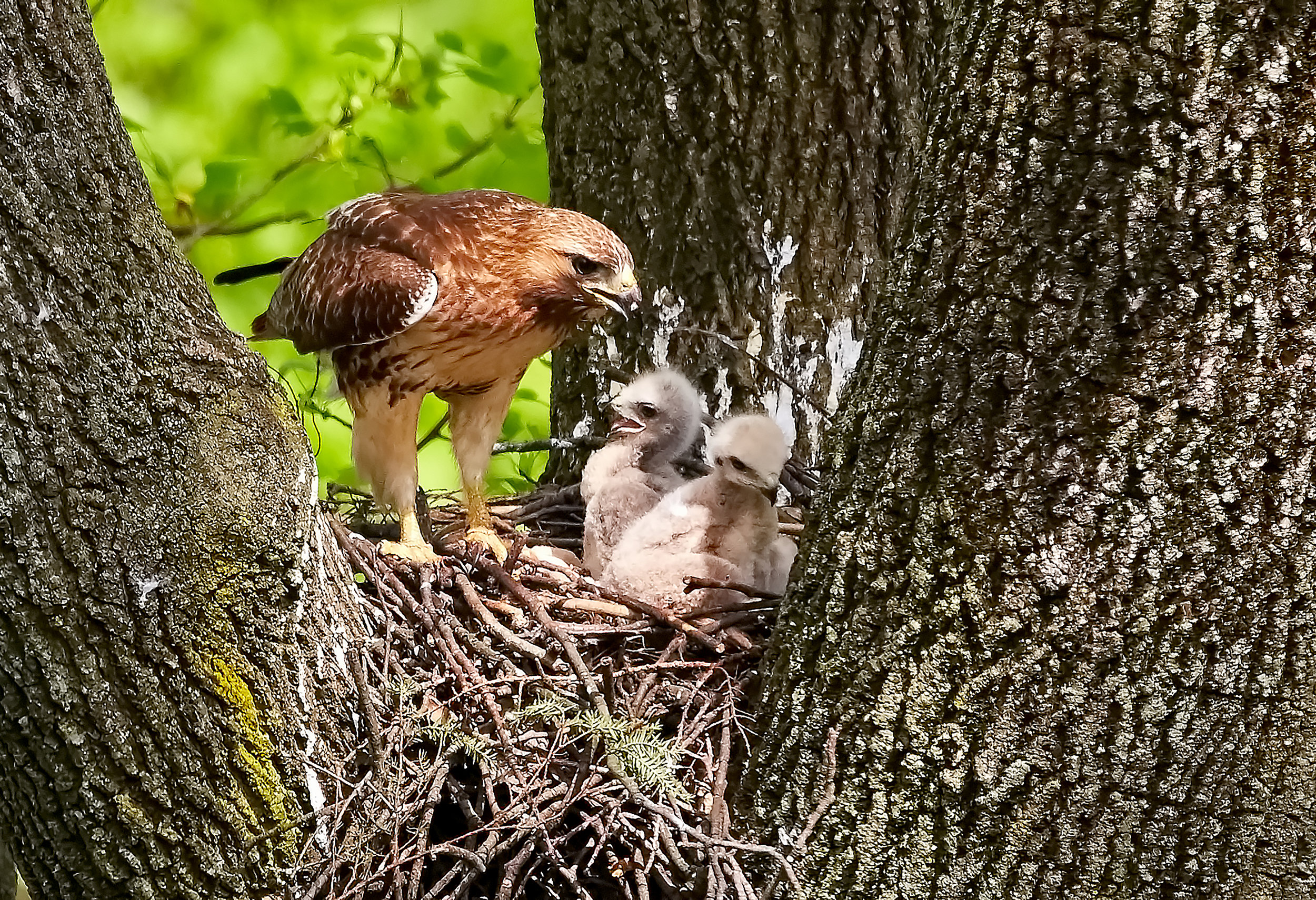URBAN ANIMALS: HAWKS MAKING IT IN THE BIG CITY
/Copyright L. Christina Cobb
A dry piercing screech sends primal chills down my spine.
Looking up, my heart jumps as I spot a red-tailed hawk perched on a lamp post right at a NYC subway entrance. So close, I can see every detail of his massive body and razor talons.
An urban nature lover, I’m thrilled out of my mind. A wild mixture of excitement, fear, and empathy floods through me as I realize this regal raptor is eating a pigeon, tearing out its prey’s feathers right over commuters’ heads. Red-tailed hawks have adapted to city living, but if you’re lucky enough to see one, it’s usually gliding or wheeling far up in the sky, or silently perched in high branches. I’ve never seen one this close up. Even my basic iPhone camera was able to capture the magnificence of this huge bird of prey—consider the camera movement “cinema verité”—it does add to the authenticity, no?
Photo credit: Matthew Schwartz. Raising kids in the concrete jungle ain’t easy.
Red Tailed Hawk FAQ
Where are urban red-tailed hawks found?
As you would guess, these hawks are most frequently sighted in green spaces like city parks. But they can also be spotted on top of apartment buildings or on street lights, air conditioners, and balconies. Red-tails are taking up residence all across American cities, some becoming celebs in their own right. When famous folks like Lin-Manuel Miranda tweet “the hawk is back outside my window” (in Upper Manhattan).” you know you’ve made it.
About how many red-tails are in New York City?
Over the last two decades, the red-tail population has, ahem, soared in NYC. It’s estimated there are 15-20 nesting pairs in the City. The increase is probably linked to reduced rodent poison use, especially during the breeding and nesting seasons. City leaders recognize raptors like red-tailed hawks as natural, inexpensive pest control as well as awe-inspiring creatures that share our urban homes. The red-tail’s growing population may also be a sign of adaptation to smaller territories. In the wild, research shows hawks need about two square miles of their own territory, but city hawks are living as close as five blocks apart.
What do they eat? Is my dog/child safe?
Red-tailed hawks are very versatile creatures and tend to adapt their hunting habits to what is locally, seasonally, abundant. In urban locations, they mostly feed on rats, mice, other birds, and squirrels. In other environments, they dine on reptiles, bats, and even crabs.
Though rare, there have been reports of hawks attacking small dogs, so best to keep your chihuahua close when you know a hawk is nearby. City hawks are still wild animals, even if they are our neighbors. Admire them from afar, or with binoculars and telephoto lenses. Not only is it respectful, but it’s also safer for all involved. If a mother hawk feels her chicks or nest is threatened, she may dive-bomb humans (child or adult), as she would other encroaching animals. Feeding hawks is a definite no-no since handouts disrupt their natural hunting instincts.
Do they mate for life? (funny story, actually)
While monogamous, red-tails may have more than one mate. Contradictory, yes, but true. The avian soap opera of nesting pair Christo and Dora brings this fact to life, as detailed in a melodramatic and hilarious New York Post story, Jilted Hawk Discovers Her Nest Is Home to a Third Bird. My favorite lines are “A cheep slut has come between a hawk and her hubby.” and “The three lovers met beak-to-beak in the center of the park, where the plumage hit the fan.”. To recap, Christo and Dora lived peacefully in Tompkins Square Park, in Manhattan’s East Village, until Dora was taken to a rehab center to be treated for an infection. Christo probably thought her absence meant she died, and as is normal in the wild, he took a new mate. After her return, there were violent three-way bird fights and failed attempts to maintain two nests, one for each female. Eventually, Christo and Dora ironed things out. The “slut” moved on to find her own territory and mate. While this polygamy didn’t last, there are documented cases where males have two mates at the same time, but in separate territories. There’s a lesson in there somewhere.
What are their nests like?
If you spot a bulky, woody, bowl-shaped nest big enough to house a bird with a 4-foot wingspan, it may be home to a red-tailed hawk. Typical construction is of twigs, leaves and green branches, lined with finer materials. Sometimes red-tails will build more than one nest before settling for the season; they may build a new nest the next season or re-occupy their last. Choice nest sites are usually the top of the tallest tree in a given green space, tall buildings and bridge towers.
How many chicks do they have?
The number of eggs red-tails lay ranges from 1-5. Incubation takes about a month, with both parents on duty. Parents tag-team feeding their chicks. Males do most of the hunting, delivering their finds to the nest. Females tear up the food before feeding the chicks. After about 6 weeks, fledglings learn to fly and start hunting for themselves.
What did FoxTV5 write about your hawk encounter?
The FoxTV5 digital producer that saw my video on YouTube is a real nature lover. If you haven’t had enough hawk-talk, check out this engaging article.
Do you have an amazing “urbanature” story? Share it in the comments! Hashtag related IG posts with #urbanature #urbiseco too
By L. Christina Cobb


